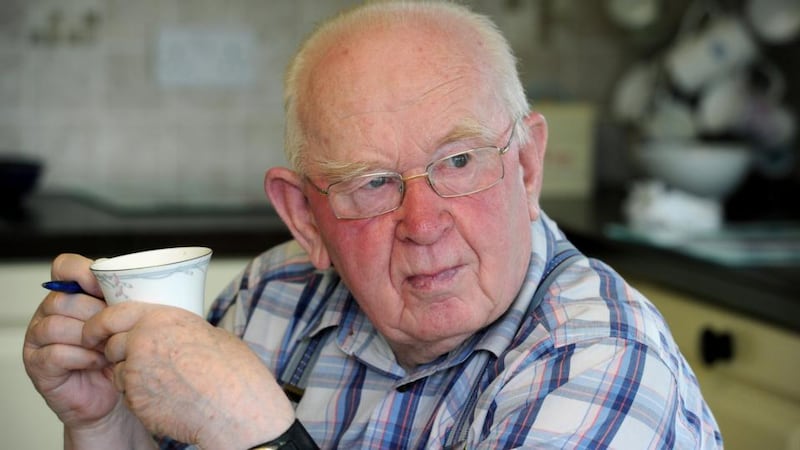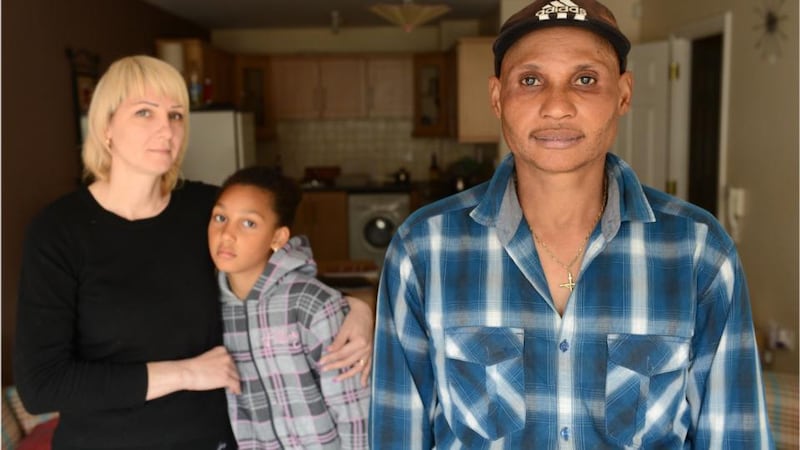In Graham Greene's novel Our Man in Havana, a torturer proposes that there are two classes of people, the "torturable" and the "untorturable", with the latter made safe by nationality, wealth and skin colour. Those who work with torture victims know that it's not so simple; that the lines between those classes frequently get blurred.
A substantial number of people living on this island have been tortured. Many of them can't believe it's happened to them. Rory Halpin, the rehabilitation coordinator at Spirasi, the Spiritan Asylum Service Initiative, says about 30 per cent of asylum seekers have experienced torture and the organisation holds hundreds of files that document horrendous acts of cruelty.
Next Wednesday is UN International Day in Support of Victims of Torture. Worldwide, torture is endemic. Anne Fitzgerald, the director of research and crisis response at Amnesty International, has been to refugee camps in which "every woman had been raped" and countries where "torture is rife".


The problem in recent years, she says, is that torture is tolerated again in the developed world. “There was a public attitude 12 years ago that it was like slavery; unacceptable at any place or time,” she says. “Since the ‘war on terror’, practices that constitute cruel, inhuman and degrading treatment or out-and-out torture are seen to be acceptable again.”
This is problematic. Ian Cobain, the author of Cruel Britannia, A Secret History of Torture, says he knows "British diplomats who, when they brought up human-rights issues, have had extraordinary rendition thrown straight back in their face".
In his book, he outlines Britain's history of torture from the second World War to colonial Kenya, Northern Ireland in the 1970s and the war on terror. I ask him about the use of Shannon Airport for extraordinary rendition. "If you allow them to fuel and take off you may not be wielding bloody pliers . . . but you are involved," he says.
Spirasi provides a safe space for victims of torture. Every day Halpin deals with ordinary men and women who have experienced horrible things: “beating, kicking, electrocution, submersion, water-boarding, being put in confined spaces, rape . . . stones being tied to people’s genitals . . . Anything awful you can think of has been done.”
PADDY JOE McCLEAN
Tortured by the British security forces in Northern Ireland
"For 40 years I've been doing my best to put it out of my head. If I talk about it there's a reoccurrence of it and the wife complains about me kicking her in my sleep." Paddy Joe McClean laughs. He's 80 years old and we're sitting in his kitchen in Beragh, Co Tyrone. He laughs a lot, but what he's talking about isn't funny.
In 1971, McClean was interned without trial and, along with 13 others, he was selected for a system of interrogation known as the Five Techniques.
McClean, who was then 38, was a remedial teacher and a civil-rights campaigner. Apparently, he was chosen because the interrogators needed a geographical spread of internees and couldn’t find an IRA man from the Omagh area. “The best they would say was, ‘You’re the chairman of the civil-rights association, people trust you, therefore you’ve been talking to IRA men.’ As if anyone had come up to me and said, ‘Sure I’m an IRA man.’ That doesn’t happen in life.‘”
McClean was examined by a doctor, dressed in an ill-fitting boiler suit, hooded and tortured. “They’d make you stand on your tippy toes with legs apart and hands against the wall and if you looked like falling you got kicked and were put back up again.” “Kicked” understates it. He shows me the back of his leg where he needed to get skin grafts because of the damage. The torturers were inventive. “Sometimes they would pick you up and run your spine up and down over the edge of a table.”
Sleep deprivation and starvation were part of this system. “They kept you awake by battering cups on the corrugated iron huts. No food. When you asked for water they’d give you a drip . . . It seemed to me they were testing how far they could go without causing death. You’d be tortured, questioned, then back again.”
The effects were devastating. “You’d swear you were going insane,” says McClean. “I came to the conclusion that I could not be allowed to survive. I knew I was going to die,” he says.
On being released he refused to get into the helicopter: “Because I knew they were going to throw me out.”
McClean coped by refusing to cooperate. “If they told me to stand up I wouldn’t stand up and if they told me to sit down I wouldn’t sit down. I’m told I have a stubborn nature.”
After about 12 days McClean was brought back to Crumlin Road Prison where a sympathetic warden brought a report of his experience to Cardinal Dalton, who took it to Ted Heath.
In 1972 the European Commission of Human Rights, on foot of a case taken by the Irish government, found that the Five Techniques amounted to torture. Some of the men subjected to them were hospitalised for mental illness. Two died soon after their release. McClean resumed his teaching job. “The immediate impact was that I would be very short of temper. Night would be the worst because I would imagine it was still happening. It only happens now if I talk about it.”
Did he get therapy? He laughs. “Gardening is my therapy. I could trust nobody. So I wouldn’t trust a therapist.”
MARY
Held captive by the Lord's Resistance Army in Uganda for 12 years
Mary (not her real name) talks in an even, calm voice about terrible things. Once, she was an administrator, working in Kampala. In March 1996, she and her husband and two children were visiting her mother-in-law in a northern Ugandan village when it was attacked by a branch of the Lord's Resistance Army. "They killed my husband and took me with them. My children were playing outside when it happened. I don't know what happened to them."
She was with the rebels for 12 years. “In the bush you lose track of time. You can see it’s dark and light, but that’s it. We would go from place to place with government forces following us. People who resisted were killed. I saw pregnant women slaughtered. Children would fall dead. You’d drop them in the river or bury them. They were capturing young children as young as nine. Girls they would rape. The chief leader of the rebels took me to be his wife. The guards who were guarding me used to rape me whenever he was away. It was a continuous thing, which is really, really sad. ”
Women disappeared all the time, she says, but she was never sure if they had run away or had been killed. “I was like a madwoman. I had stopped living. One day, because I refused to sleep with one of the guards he pierced me with a spear on my leg. My leg swelled and was oozing pus. We kept walking because they didn’t care . . . But my leg was still oozing blood and pus, so when we reached a village they took me to a doctor they knew.”
She ran away when the kerosene in the doctor’s lamp ran out. “It was pitch dark and I rushed into the bush. I could hear them shooting in the air trying to fish me out. When they gave up, I walked into the unknown. I was sick, tired and hungry but I didn’t care whether I died. I met this guy walking in the bush who told me I was in south Sudan. He took me to a reverend and his wife who helped me. They organised my coming to Ireland.”
That was four and a half years ago. “I have physical problems. I have many broken parts of my body. I got counselling, which is helping me.”
When I ask how her experiences have affected her, she just looks at me sadly. She says she can’t put it into words, but then she tries. She misses her children. She is grieving for her husband. “I have grown old.”
FRANKY NYEKTURE
Abducted and tortured by Robert Mugabe's Green Bombers in Zimbabwe
Amid the brightness and bustle of the Tallaght Shopping Centre, Franky Nyekture is showing me his burns. Nearly 10 years ago he was captured by Robert Mugabe's Green Bombers and held under burning tyres so that the hot melting rubber would drip on his skin.
Before that he lived with his stepfather, who was white. "I left Zimbabwe for Russia to study in 1994. When I came back in 2000 I came with my wife, who is a white woman. That automatically made me a traitor to Robert Mugabe. "
Nyekture became a farm manager and part-time lecturer. But when he and his wife were travelling around Zimbabwe, his stepfather’s farm was burned down and his stepfather disappeared. “We never traced him. My wife was heavily pregnant. When my child was born in 2001 I told [my wife] to take the child and go back to Ukraine until things calmed down.”
He became political, but politicisation is dangerous in Zimbabwe and in 2004 he and 10 other men were abducted, brought to a disused mine and tortured for three months. “Every day, torture, torture, torture. They’d call us traitors. No light. No sleep. They’d bang the bars in the middle of the night. You’d hear others scream and know that soon it will be your turn. Beating, kicking. Do you know what it is to be hit with the butt of a gun? My teeth were broken. You black out and they throw water on you.”
Eventually his captors threw him in the bush. He was rescued by a man who heard his cries. He couldn’t walk. Many of his bones were broken. He hid in his rescuer’s home for six months until opposition-party contacts smuggled him out of the country. “I didn’t even know I was going to Ireland.”
He was granted refugee status after eight months. “The scars were all over my body,” he says. “I had plenty of proof.”
Therapy at Spirasi helped a lot, and getting back in contact with his wife and daughter in 2006 was “the happiest day of my life” but it took six years before the Irish State reunited them.
“From time to time, when recounting the situation, I feel very bad. I have nightmares, thinking I am still there.”
Next Wednesday is UN International Day in Support of Victims of Torture. spirasi.ie, 01-8389644















